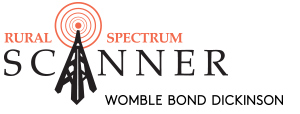The Consumer and Governmental Affairs Bureau (Bureau) has released Strategies and Recommendations for Promoting Digital Inclusion as directed by the FCC in its 2016 Lifeline Modernization Order (Order). In the Order, the FCC adopted reforms to make broadband more affordable for low-income Americans and recognizing that there are many factors other than price that act as a barrier to digital inclusion, directed the Bureau to develop a plan for the FCC to address them. Among its recommendations, the Bureau suggest outreach and digital literacy education in partnership with other agencies working to promote broadband adoption, such as the Department of Education. For example, workforce development programs and community colleges could partner together and have local students provide technical support to computing facilities in schools, libraries, and public housing communities in need. The Bureau also recommends the adoption of policies that support Lifeline Aggregation Projects to allow community-based organizations to coordinate the aggregation of Lifeline benefits through outreach campaigns. For example, an assisted-living community that provides services to low-income disabled adults could assist residents with enrollment in an aggregated benefit program that provides high-speed wireline broadband to the assisted-living center. The Bureau also suggests the FCC simplify the purchasing of ISP services by adopting the Consumer Advisory Committee’s no surprise billing recommendations, and using the Educational Broadband Service to provide service to underserved areas.
Sunday, December 22, 2024
Womble Bond Dickinson,” the “law firm” or the “firm” refers to the network of member firms of Womble Bond Dickinson (International) Limited, consisting of Womble Bond Dickinson (UK) LLP and Womble Bond Dickinson (US) LLP. Each of Womble Bond Dickinson (UK) LLP and Womble Bond Dickinson (US) LLP is a separate legal entity operating as an independent law firm. Womble Bond Dickinson (International) Limited does not practice law. Please see www.womblebonddickinson.com/us/legal-notices for further details.
© Womble Bond Dickinson (US) LLP








